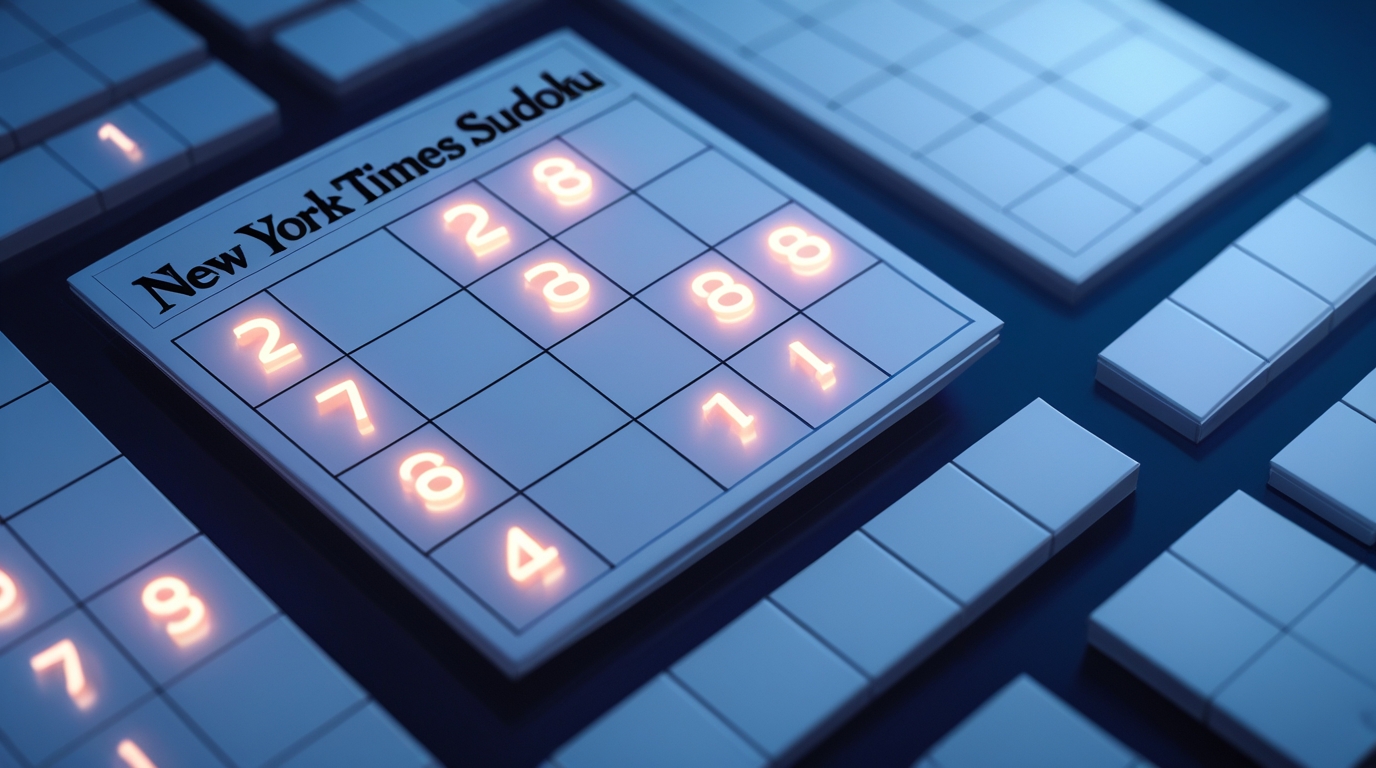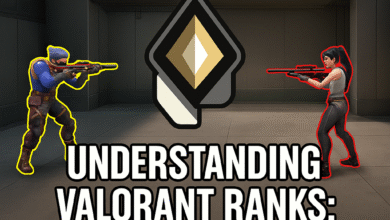New York Times Sudoku: Your Ultimate Guide to the Daily Number Puzzle

If you’re a fan of logic puzzles and mental workouts, you’ve likely come across New York Times Sudoku. This daily logic-based number puzzle challenges you to fill a 9×9 grid with digits so that each row, column, and 3×3 box contains every number from 1 to 9 without repetition. The New York Times Sudoku game has become a beloved part of the NYT Games collection, offering a clean interface, expert-designed puzzles, and features that appeal both to beginners and seasoned solvers.
What Is New York Times Sudoku?
Sudoku, in the NYT’s version, is a logic puzzle that runs daily on The New York Times website and in its Games app. The goal is straightforward: fill in the empty cells of a 9×9 grid such that every row, every column, and each 3×3 subgrid contains the digits 1 through 9 exactly once.
Unlike many casual games, NYT Sudoku emphasizes clean design, logical purity, and a single correct solution for every puzzle.
Where and When You Can Play New York Times Sudoku
Platforms to Play
You can play New York Times Sudoku on:
- The NYT Games website (nytimes.com/puzzles/sudoku)
- The New York Times mobile app, specifically in the Games tab or Play section
- The NYT Games app, which is designed for puzzle fans and includes Sudoku alongside Crossword, Spelling Bee, and others.
Timing / Puzzle Release
Sudoku puzzles from NYT are updated on a predictable schedule:
- From Tuesday to Saturday, a new puzzle appears at 10 p.m. Eastern Time.
- On Sunday and Monday, the new puzzle is released at 6 p.m. Eastern Time.
That means if you’re a regular player, you can look forward to new challenges every day.
Difficulty Levels in NYT Sudoku
The New York Times offers three main difficulty levels for its Sudoku puzzles: Easy, Medium, and Hard.
These levels help match the puzzle to your mood or skill level:
- Easy — For beginners or a relaxed daily solve.
- Medium — More open cells, requires more deduction.
- Hard — Minimal givens, more complex logic needed.
Reddit discussions suggest that “medium” puzzles can sometimes feel harder than “hard” on certain days, largely because difficulty isn’t strictly linear — it depends on the logical structure embedded in the puzzle.
Key Features of NYT Sudoku
Here are some of the features and tools that make New York Times Sudoku user-friendly and powerful for logical play:
- Candidate / Note Mode: You can switch to a mode where you mark possible numbers (pencil marks), and then return to “normal” mode when you commit to a number. Zendesk
- Error Counter: Optionally track how many mistakes you make — a great way to challenge yourself.
- Cell Highlighting: Highlight the row, box, and column of the selected cell, or highlight all identical numbers, depending on your preference.
- Dark Mode: Available in the NYT Games app or via the NYT News app’s dark theme — helpful for low-light solving.
These features help make your solving more accurate, manageable, and comfortable.
How to Solve New York Times Sudoku: Proven Strategies
If you’re just starting or want to improve your speed and consistency, here are some of the most effective techniques people use for NYT Sudoku:
- Scan Method
- Look row-by-row, column-by-column, and box-by-box for spots where only one number fits.
- Identify “single possibilities” — cells that logically can only be one digit.
- Use Pencil Marks Wisely
- In candidate mode, jot down possible values for a cell.
- When a number is eliminated, update your notes so you’re not working with stale options.
- Naked Pairs / Triples
- If two (or three) cells within a row or box share the exact same pencil-mark possibilities, you can eliminate those numbers from other cells in that house.
- Advanced Techniques
- Use techniques like X-Wing, Swordfish, or XY-Wing when you’re tackling harder puzzles. These strategies help in more advanced logic deduction.
- Try “what-if” reasoning: assume a number in a cell, see consequences, and backtrack if it leads to a contradiction. nytsudoku.org
- Error Checking
- If enabled, the error counter or red-dot indicator helps you catch mistakes early.
- When you make a wrong entry, don’t guess rashly — consider the logical impact of the mistake.
- Maintain a Solving Routine
- Many solvers find consistency helps: do a puzzle daily, and over time, patterns will become more familiar.
- Don’t rush — Sudoku rewards patience and clear thought.
Why New York Times Sudoku Is Trusted & Popular
There are a few reasons why New York Times Sudoku enjoys strong popularity among puzzle fans in the U.S.:
- Editorial Quality: NYT puzzles are carefully curated to guarantee a single solution and a balanced challenge.
- Daily Habit: Since it’s a daily puzzle, it builds a routine — many users play it with morning coffee or in the evening.
- Accessible for All Levels: With three difficulty tiers, both novices and experts can enjoy the game.
- Trusted Brand: As part of the NYT Games family — which includes Crossword, Spelling Bee, Wordle, and more — it carries credibility.
- Minimalist, Clean Interface: The interface is clean, intuitive, and optimized for both web and mobile play.
Pros & Cons of Playing NYT Sudoku
Pros
- Great for brain training: Helps with logic, memory, and concentration.
- High-quality puzzles: Developed or vetted by puzzle editors to ensure uniqueness.
- Multiple difficulty levels: Easy to jump in for beginners, and challenging for veterans.
- Accessible across devices: Web and mobile support make it flexible for play.
- Useful tools: Notes, highlighting, error checking make solving more manageable.
Cons / Challenges
- Limited archival access: Some users note that older puzzles may not be accessible without a paid NYT Games subscription.
- Inconsistent difficulty perception: Some puzzlers argue that “medium” feels harder than “hard” on certain days.
- No “undo all”: Depending on the platform, large mistake recovery might be cumbersome.
- Time-consuming: As puzzles get harder, they can take a good chunk of mental energy and time.
Sample Solving Session: A Walkthrough
Let me walk you through an example of how a typical NYT Sudoku solving session might go, especially for someone doing a Medium puzzle:
- Open the Puzzle
You log into NYT Games or the NYT website around the puzzle release time. You select Medium difficulty. - Initial Scan
You scan every row, column, and 3×3 box, filling in any “single possibilities” — where only one number logically fits. - Enable Notes Mode
Switch to candidate mode and pencil in possibilities for ambiguous cells. Maybe a particular 3×3 region has 3 or 4 open cells; you note possible numbers. - Fill Confident Spots
With notes in place, you see that a particular cell can only be “2” because all other numbers are eliminated by row/column/box — you place the “2.” - Use Logical Patterns
You notice a pair of cells in a column that both contain only {5, 8} as candidate numbers; that means those two must be those numbers, so no other cell in that column can be 5 or 8. - Error Check
A wrong move shows a red dot (if error checking is on). You undo that number, revisit your candidate notes, and reconsider. - Progress + Cascading Solves
As more cells are filled, some of your previous notes drop out or simplify. You find new single possibilities, fill more numbers, and continue until near the end. - Final Moves
In the final few empty squares, you might make a “what-if” assumption to test whether one candidate leads to a valid solution. If it fails, you backtrack and try another. - Completion
Once the grid is fully complete, you check that every row, column, and 3×3 subgrid has all numbers 1–9. There’s no duplication. You finish your time, and maybe record how long it took. - Reflect
You note which strategies worked well and which were less helpful — maybe next time you’ll use more “X-Wing” or be more aggressive with notes.
Common Mistakes & How to Avoid Them
When new players tackle New York Times Sudoku, here are some mistakes they often make — and how to sidestep them:
- Guessing Too Early: Instead of guessing, use logical elimination and candidate mode.
- Ignoring the Entire Grid: Focusing only on one region can make you miss easier placements.
- Forgetting to Update Notes: When you place a number elsewhere, you should revisit your pencil marks.
- Neglecting Advanced Techniques: As you get stuck, leveraging “X-Wings,” “Swordfish,” or “Chains” can unlock difficult areas.
- Not Using Error Checking: If you make mistakes, turn on the error counter or red-dot system to catch and correct them early.
Why the NYT Sudoku Daily Habit Is Worth It
Building a daily routine around New York Times Sudoku offers several long-term benefits:
- Mental Exercise: Regular logic puzzles stimulate brain areas involved in working memory and problem-solving.
- Stress Relief: The focused, meditative nature of Sudoku helps many people decompress.
- Skill Growth: Over time, you’ll naturally pick up advanced techniques and solve more efficiently.
- Habit Formation: A daily puzzle becomes a relaxing ritual, whether morning or night.
- Achievement Feel: Completing a challenging puzzle gives you a sense of accomplishment and boosts your confidence.
Frequently Asked Questions (Q&A)
Q: Is New York Times Sudoku free to play?
A: Yes, you can play the daily NYT Sudoku via the NYT Games website or app. However, some older puzzles or archives may require a paid NYT Games subscription.
Q: How many difficulty levels does NYT Sudoku have?
A: Three modes: Easy, Medium, and Hard.
Q: When does the Sudoku puzzle each day get updated?
A: New puzzles are released Tuesday–Saturday at 10 p.m. EST, and Sunday–Monday at 6 p.m. EST.
Q: Can I access past NYT Sudoku puzzles?
A: Archive access is limited and typically requires a NYT Games subscription. Some users report they can’t view older puzzles on mobile.
Q: What if I’m stuck — are there hints?
A: The NYT Sudoku interface provides a “Hint” feature, and you can use candidate mode to mark possible numbers.
Q: Who designs or edits NYT Sudoku puzzles?
A: The puzzles are crafted or vetted by NYT’s puzzle team to ensure a single solution and well-balanced logical structure.
Q: Why do some Medium puzzles feel harder than Hard ones?
A: Difficulty depends on the logic pattern used, not just how many empty cells are given. Some Medium puzzles use more advanced techniques rarely found in “Hard” layouts, according to experienced solvers.
Q: Does NYT Sudoku save my progress across devices?
A: Many users report that progress does not sync perfectly between app and web — some puzzles or partial completions may not carry over.
The New York Times Sudoku puzzle is more than just a daily brain game — it’s a carefully crafted logic exercise that challenges you to think, strategize, and grow your problem-solving skills. Whether you’re doing the Easy puzzle to relax or tackling the Hard one to sharpen your logical techniques, NYT Sudoku offers a satisfying mental challenge for players at every level.





